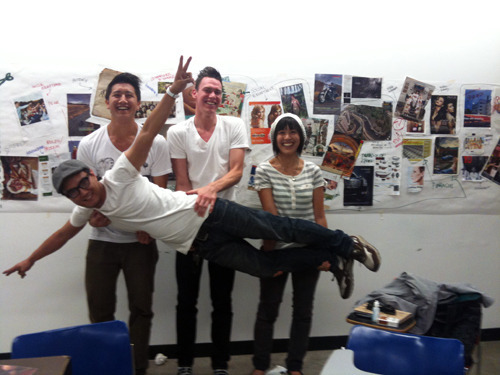Our Approach
 KC Cho, Vinh Pho, Max Knecht, and Sophie Wijaya complete a generative tools exercise, Summer 2010.
KC Cho, Vinh Pho, Max Knecht, and Sophie Wijaya complete a generative tools exercise, Summer 2010.
Bad research is everywhere. Good research is difficult. How can we prepare designers to gather insights that are beyond the obvious, that lead to opportunities for breakthrough design?
We need to accurately determine what people want, need, and experience to create the best design, and the quality of the research determines the quality of the knowledge.
We have developed a way to teach effective qualitative research approaches to product designers, and to address institutional values criteria with the final result. Topics covered: the curriculum and materials, analysis of the current state of research education, an ideal solution, and a realistic roadmap for its application, deployment and testing.
As currently taught, design research is treated as a constant set of tools and students tend to think that it’s a standard process. In fact, each design project requires a tailored research process. The larger field of design research is evolving and good design practice stays abreast of these developments. Design research is a systematic process. There are decisions to be made at the start of the design process, and points along the way where research is interjected. Our content analysis to date has found 61 techniques for research and 21 for analysis, and the list is growing. It is difficult for newcomers to understand which approach should be used for a particular project, and why.
Also, design research can be its own career path, and students should have a robust foundation of knowledge in this area.